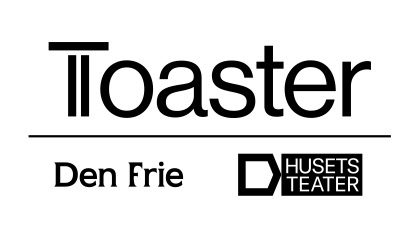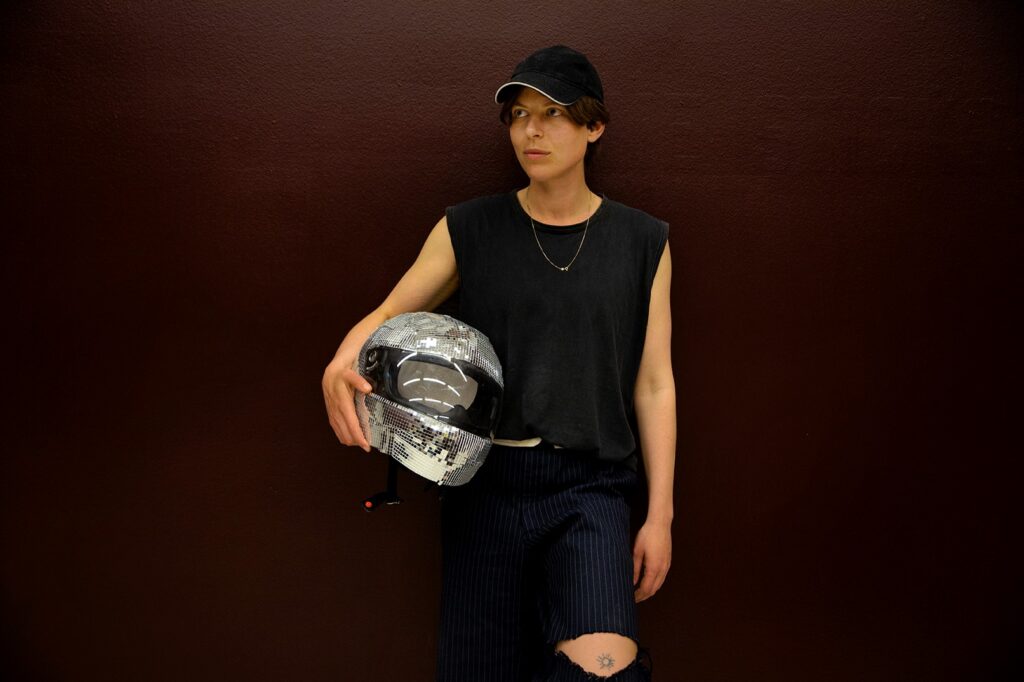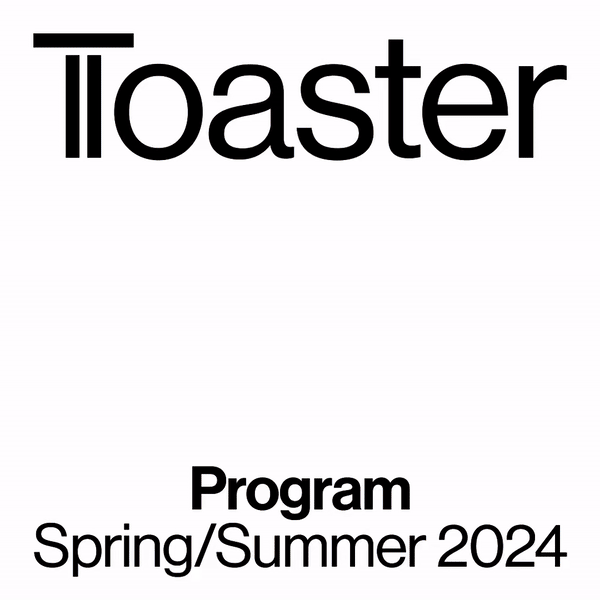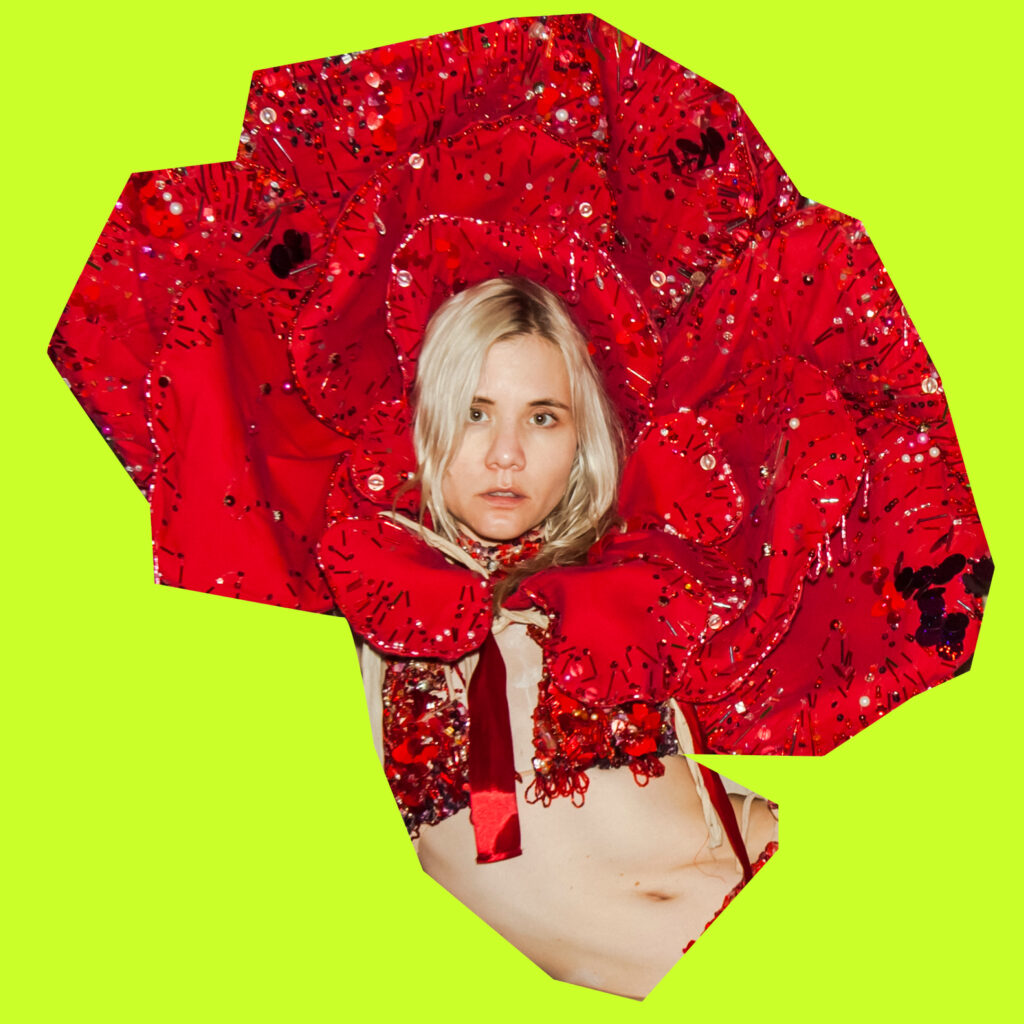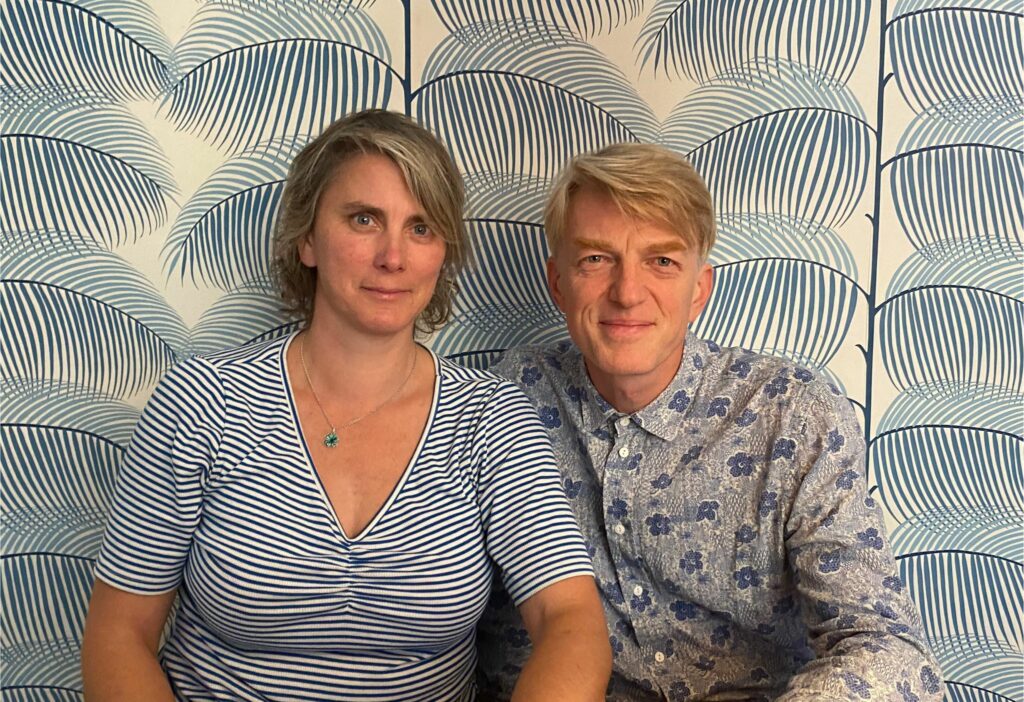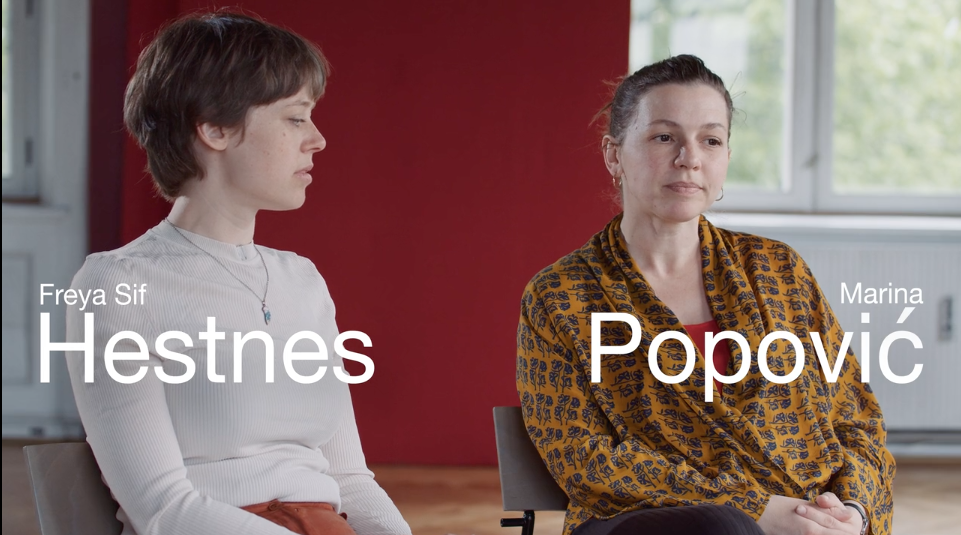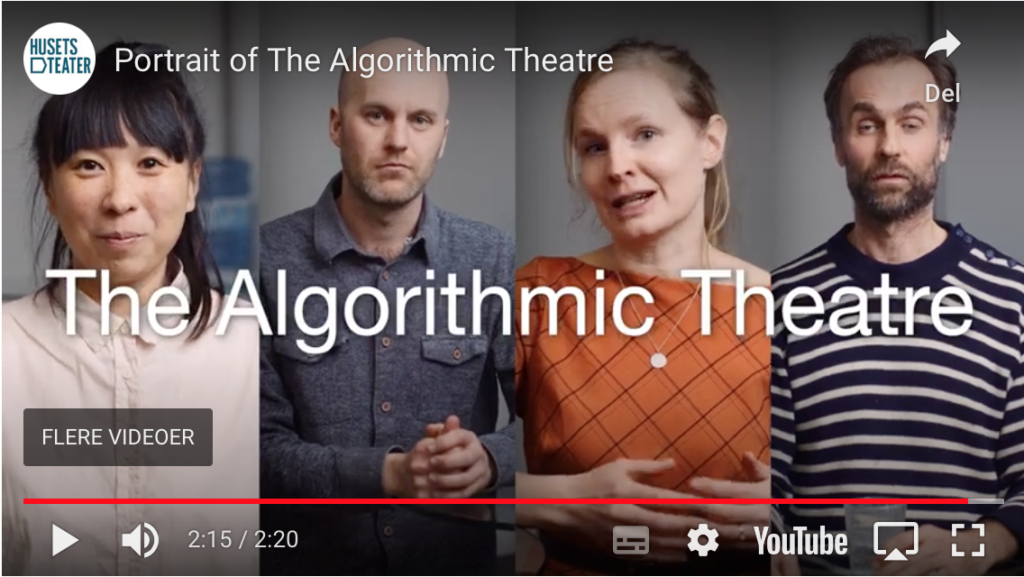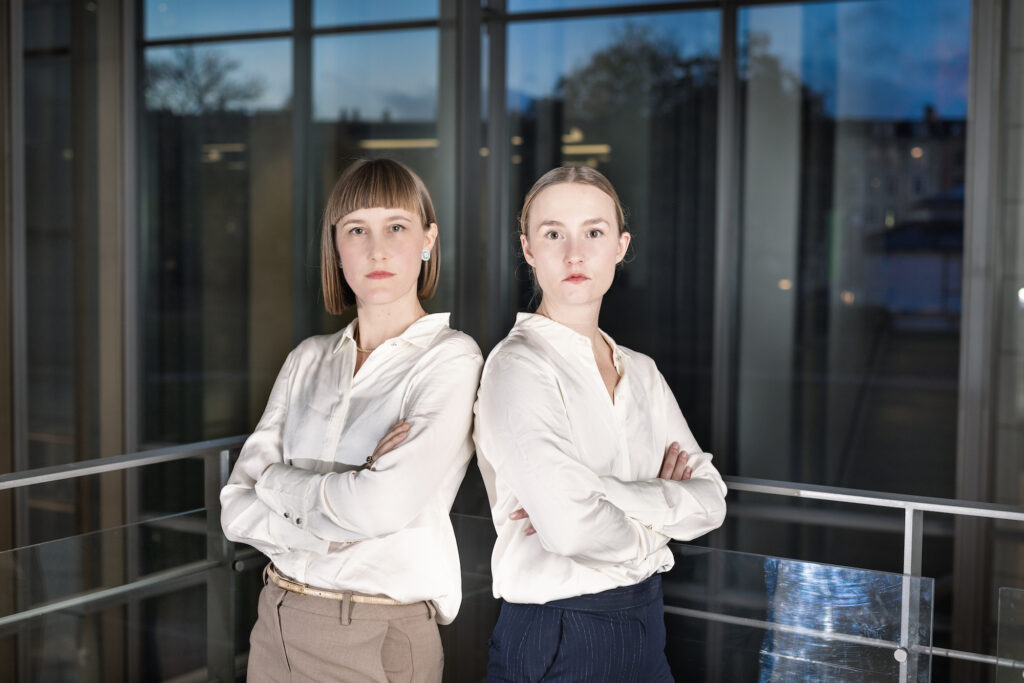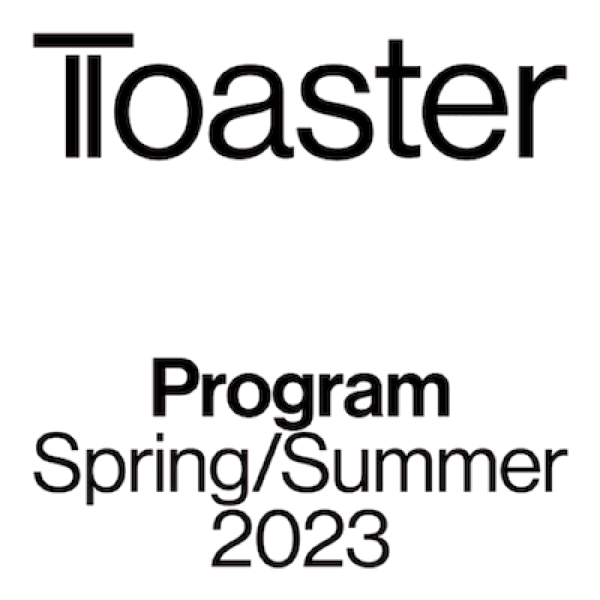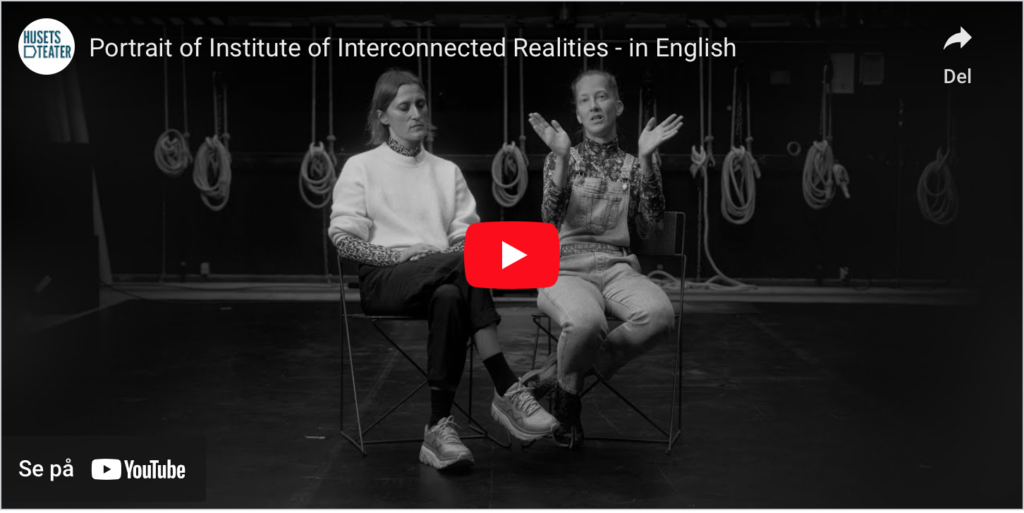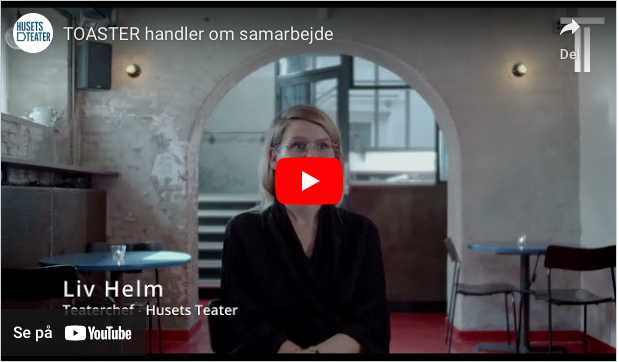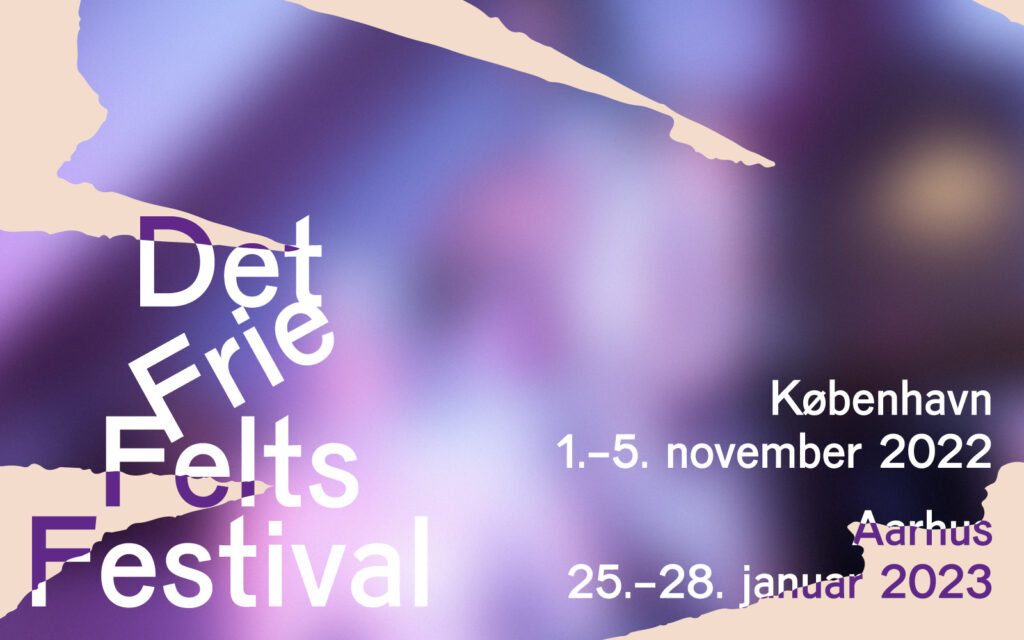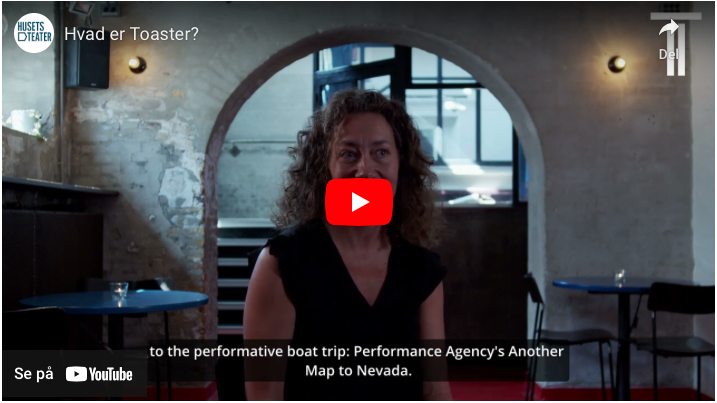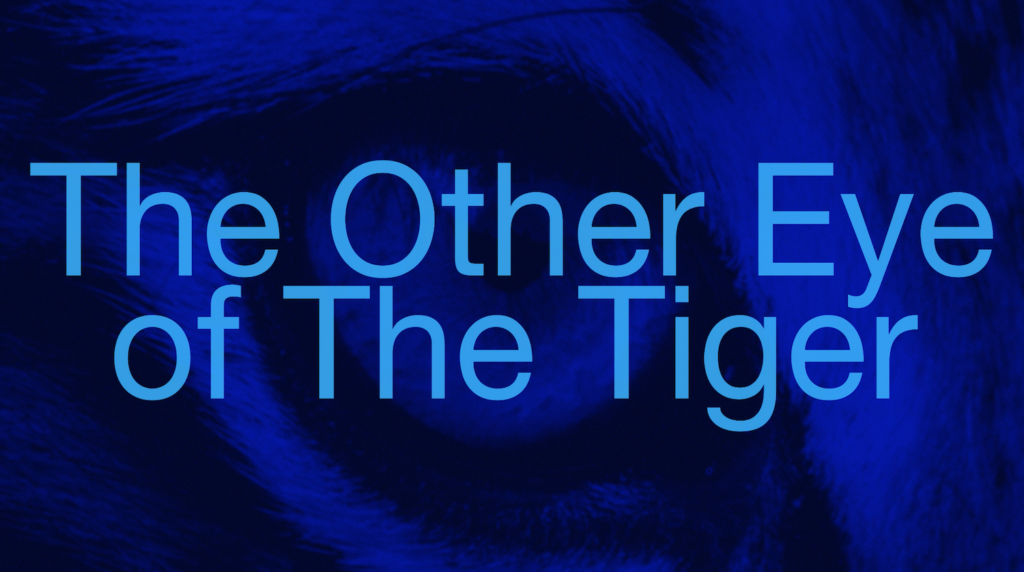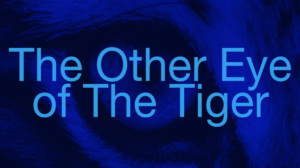Interview with The Other Eye of The Tiger by Miriam Frandsen
Translated by Pernille Kragh
The Other Eye of The Tiger (TOETT) is a group that has existed for several years and has created performances together since their time as students at The Danish National School of Performing Arts. It’s been a total of four performances together so far. They’ve been resident artists since the start of Toaster and in the autumn of 2021 they hosted two audience salons on the basis of one week workshops. The workshops explored the in-ear technique which constitute the foundation of their upcoming performance. After the workshop they were in dialogue with Liv Helm, artistic director of Husets Teater and co-founder of TOASTER, who encouraged them to work with an existing text. The idea was that TOETT should stage their first classic and the choice fell on Henrik Ibsen’s Peer Gynt.
I meet with four of them; Ida Grarup (set designer), Asger Kudahl (sound designer), Suni Joensen (lighting designer) and Henrik Grimbäck (director) – for a chat in the lunch room at Husets Teater in the middle of rehearsals, three weeks before the premiere:
What’s the artistic motivation for doing Peer Gynt?? How did the idea come about?
TOETT: It came about in different steps. The concept came first. Our core DNA in TOETT is audience involvement. So working with audiences on stage is an ongoing examination we’ve been having from the off and we had reached a point where we now wished to try out the in-ear technique. This was the first point of origin and our primary motivation.
In everything we’ve done so far, the text has been created by the group, primarily as a work between the director and the actor, but with the whole group as dramaturgical sparring partners. Step two then was this idea of making a classic in stead, to make the starting point a written text.
The reason we chose Peer Gynt was the thought, that the lie and the essence of the lie was interesting to us: What does it mean to lie your way through life? In previous performances we’ve delt with a character, a real person, who then becomes the frame for the performance and different stories spring from that. It’s always been characters with amazing stories, which we’ve then built upon and added to, but always with a basis in reality. This is a bit the same exercise but in reverse: we begin with an amazing story of Peer Gynt which is fiction, and then we bring some more or less real persons into the story. And in that way it resonates with our other performances. But we’ve spent a lot of time finding ourselves in the text, because we started from a completely different place than usual. Normally we begin with a concept or a wonky story from real life, that we choose ourselves. It was clear to us from the start that we didn’t want to make a classic like you’d normally do. The question was: how much we wanted to avoid making it? That’s why we spent a lot of time on the title, because we didn’t want to cheat people, so they thought they were going to see Ibsen’s Peer Gynt. We wanted to emphasize that it was our take on the story. So the question mark in the title is essential. The result is that we are not playing Ibsen’s Peer Gynt, but our very own new text written on top of Peer Gynt.
In the last two performances we made, The Martyr’s Museum and Zero, we’ve been working with hardcore facts. We’ve had experts involved and worked with the dramatization of research. That’s why this time we felt like starting from a more playful place, in stead of working with cold facts. So we’ve given ourselves a new challenge by following the plot of Peer Gynt, but to still create our own story entirely. The key to this story was the intermingling of Henrik Ibsen’s and Peer Gynt’s lives. So we ended up staying true to TOETT’s own style which is to start the story with a real person.
How do you create your texts?
TOETT: Our method, which always runs through the way we work with text, is working with telling and retelling a story. Henrik writes texts in Swedish which the actor (in our previous performances the TOETT-member Morten Hee Andersen, in this new performance it’s Morten Burian) then retells in his own words in Danish. When the story is retold, new and different things often appear with each repetition, and slowly it becomes a core in the story, that we then follow.
What kind of audience interaction are you working with? And why is audience interaction so important?
TOETT: Audience interaction is the most important thing in this art form because it’s what constitutes the basis for theatre: That we are present together in the same space. The special thing about working with the performing arts is that it’s a collective art experience and it’s this experience that we’d like to expand and maximize. If you can incorporate the audience in the performance, you’ve really used that potential to it’s fullest. And that interaction can’t be created in any other art form – it could perhaps be compared to singing along at a live concert, but then in our view that is also performing arts.
The person performing live is entirely dependent on the reactions from the auditorium. The audience always helps to create the performance they’re watching and it’s this reciprocity between the audience and those on stage we’re working with quite concretely by abolishing the distinction between audience and performer. We are so literal that if only five audiences show up, the performance can’t actually play. It takes a minimum of 20 audiences to complete it. So how we can collaborate with the audience and use them in the staging is what’s most important to us.
It’s a friendly interaction we’re trying to create and we hope they have a great experience by contributing. We call them human placeholders and it’s a method we’ve developed right from the start. The audience plays a role in the narration and they are turned into a character. But they don’t actually play the character, it’s more along the lines of a signifier of a person, making the audience watching project a lot of feelings and thoughts into the character. For example, a 40 year-old man can play a little girl. It becomes a clarification of the fundamental situation in theatre, where anyone can play anything. We want them to come and create the world with us, tell the story and imagine with us.
In our previous performances it’s been 100 percent controlled by the actor Morten Hee Andersen, who has described the situation and explained to the audience what was about to happen and what you’re looking at. This time we’ve been curious to whether this could occur without the actor staging the audience? We wanted to examine whether you could create some bigger and more complex images without the actor telling each individual what to do. And this is where the in-ear technique entered the frame. We wanted to expand the human placeholder method to accommodate more than one or two at a time. With the in-ear technique we fill the space more and use the audience as a set design.
During rehearsals we’ve experienced a different energi emerging, when actor, Morten Burian, aren’t in control of everything. The fact that many people are moving simultaneously is a big force in a given space.
How do you create a performance where you depend so much on audience interaction?
TOETT: It requires being allowed to enter into a rehearsal process without knowing what will come of it. And it requires a lot of trust from the venue for which the performance is being created.
Toaster enables us to test things we haven’t been able to test before by giving space and by arranging a test-audience for us twice a week from the beginning of rehearsals.
What do you want to make the audience think about with the performance Peer Gynt??
TOETT: If you exit thinking a little more than when you entered, that’d be great! In relation to the main theme of Peer Gynt, concerning the lie, this is also what our performance puts into play. We live in a time where truth is up for debate and has been dissolved. We experience that it’s very much up to you, to define what your personal truth is and that makes it very difficult to be human, because you don’t know if you share your perspective on the world with others. Therefore, you also have different starting points in terms of what you want to talk about or what crisis you want to solve. Because you see the world fundamentally different. We ourselves think a lot about how we can live with the compromising of facts and how we can live with the lie. We’re all for facts and for eradicating the lies roaming around on the internet, but we can’t know if the media we read and relate to speak the truth or if they are more or less biased. It permeates everything. This uncertainty is kind of wild when it comes to existence. To acknowledge that lies exist everywhere. Both in terms of the big stories about the world like the climate crisis, the world economy etc., but also in terms of our own story about ourselves, we always compromise and only tell the things we can stand. In the sense that we adapt our stories when retelling them to other people, so as better to accommodate them or maybe we even embellish them. Maybe the fish I caught wasn’t quite 1,5 meters, but it was a huge experience for me to catch it and that’s what I’m telling by lying about the size of it. We’re interested in examining and work with which lies are innocent and which are deeply dangerous to us, both in our personal relationships and on a more overall societal level.
So we started to consider the lie as a form of survival mechanism to be able to exist at all in both big and small. Because really we lie to ourselves all the time, because maybe sometimes the truth is too painful?
It’s dawned on us how incredibly difficult it is to sort out the complexity between truth and lie and that is the experience we would like to share.
What’s the next natural experiment for TOETT in extension of this performance?
TOETT: Our performances have always started with something we wanted to examine and it could arise in different parameters. Be it an idea for a set design or a sound idea or an audience walk as a principle, as the point of origin. That’s what’s special about our group, we can each bring a burning interest in something that we wish to explore and then you have some playmates agreeing to that exploration. And often there are several explorations going on at the same time.
In TOETT we’re both very nerdy and also very collective. It’s often the specific profession that becomes the starting point for an exploration, but we love being able to build on each others professions. That you can look at it from your own field and in that way help resolving the idea from a different angle. The Peer Gynt? project started with the idea of controlling the audience via in-ear, but that came from a different idea of having speakers on the audience, and that again sprang from a sound experiment we worked on during the performance Zero.
So our next project will also address this exploration and we might want to work with even more audiences on stage – for example make an opera with an entire choir, but the most important thing to us is to continue the exploration with the audience, whether we scale it up or down is less important.
Rehearsals are about to start and the interview is over. Both actor Morten Burian and an audience test-group is ready to explore the complex interaction in the theatrical space, which is both fiction and reality at the same time, in the same way that truth and lies intertwine. Because it’s both real and true that we are present in the same space and that we are playing a game together, but it is a lie and fiction when both actor and audience transform into Peer Gynt, mother Åse or a group of wedding guests and suddenly we’re in Africa and not in Husets Teater. But it is true, hopefully in the eyes of many people, that art asks important questions of our way of living and understanding life.

